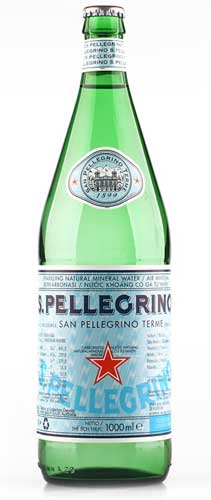
San Pellegrino Water Analysis:
| Balance | Classic |
| Virginality | Very Good |
| Minerality | High |
| Orientation | Hint of Sweet |
| Hardness | Very Hard |
| Vintage | |
| Carbonation | Added |
| TDS | 1,109 mg/l |
| ph factor | 7.7 |
| Hardness | 744 mg/l |
| Nitrate | 2.2 mg/l |
| Calcium | 208 mg/l |
| Magnesium | 56 mg/l |
| Sodium | 44 mg/l |
| Potassium | 3 mg/l |
| Silica | 9 mg/l |
| Bicarbonate | 136 mg/l |
| Sulfate | 549 mg/l |
| Chloride | 74 mg/l |
| Source: | Spring |
| Location: | |
| Country of Origin: | Italy |
| Region: | Milan |
| Place: | San Pellegrino Terme |
| Established: | 1899 |
| Company: | |
| Status: | Not a member of the Fine Water Society |
| Web Site: | |
| phone: | |
| email: | |
| Social Media: |
Although it is exported widely, San Pellegrino is not common in Italy. The water’s greatest asset is its very low nitrate level, which indicates an unspoiled source. This high mineral content water is also a fairly significant source of sulfates and calcium. It is a nice water, but I’d love to see alternatives in restaurants, so if you see San Pellegrino ask for an alternative.
The sumptuous marble drinking hall Fonte Termale stands in the town of San Pellegrino as a reminder of “taking the waters” in a bygone era. Three 1,300-foot (396 m) deep springs bring still water to the surface at 78.6 degrees Fahrenheit (26°C). San Pellegrino was first put on the map when Leonardo da Vinci sampled the town’s waters.
